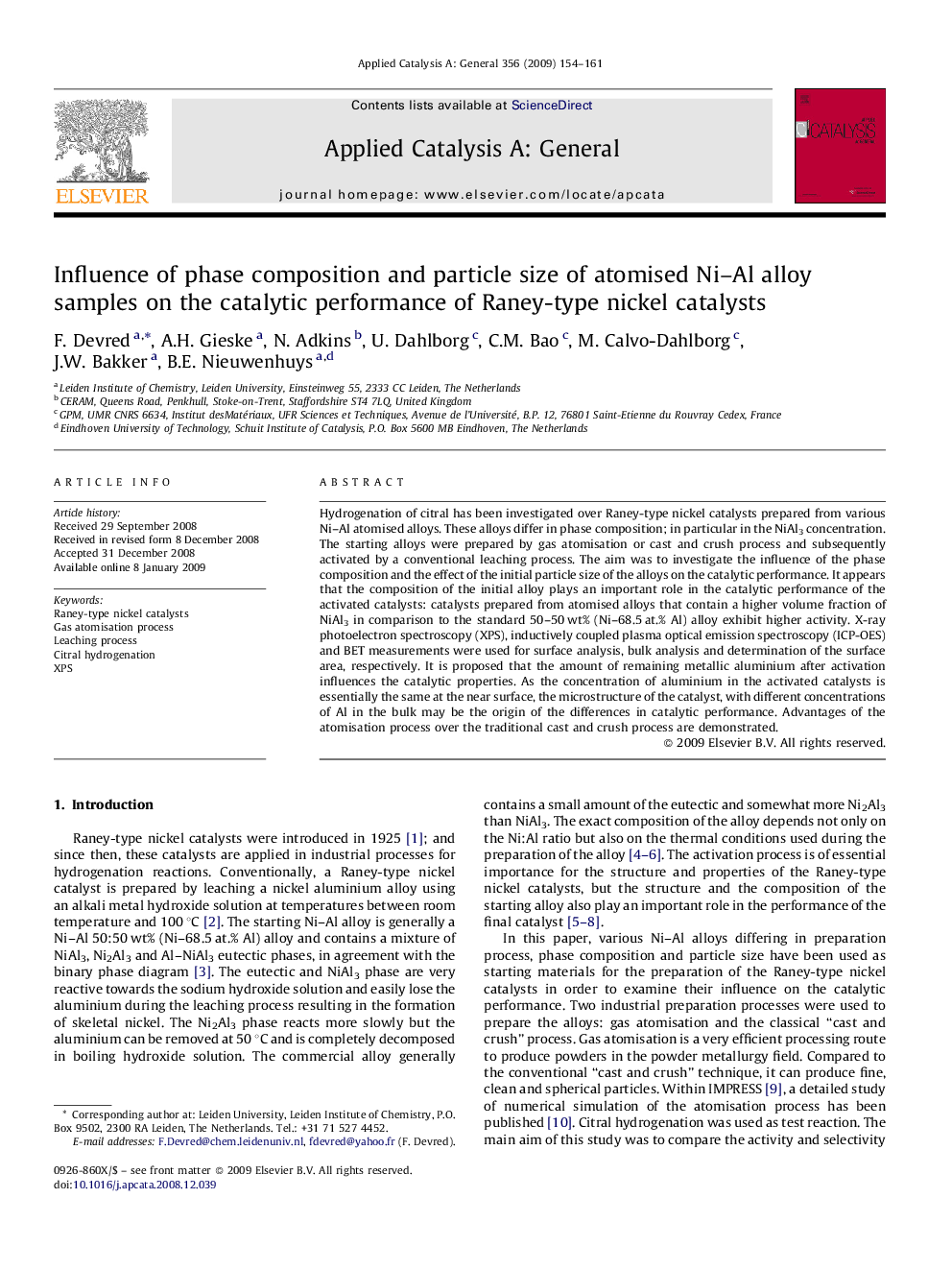| کد مقاله | کد نشریه | سال انتشار | مقاله انگلیسی | نسخه تمام متن |
|---|---|---|---|---|
| 42543 | 45930 | 2009 | 8 صفحه PDF | دانلود رایگان |

Hydrogenation of citral has been investigated over Raney-type nickel catalysts prepared from various Ni–Al atomised alloys. These alloys differ in phase composition; in particular in the NiAl3 concentration. The starting alloys were prepared by gas atomisation or cast and crush process and subsequently activated by a conventional leaching process. The aim was to investigate the influence of the phase composition and the effect of the initial particle size of the alloys on the catalytic performance. It appears that the composition of the initial alloy plays an important role in the catalytic performance of the activated catalysts: catalysts prepared from atomised alloys that contain a higher volume fraction of NiAl3 in comparison to the standard 50–50 wt% (Ni–68.5 at.% Al) alloy exhibit higher activity. X-ray photoelectron spectroscopy (XPS), inductively coupled plasma optical emission spectroscopy (ICP-OES) and BET measurements were used for surface analysis, bulk analysis and determination of the surface area, respectively. It is proposed that the amount of remaining metallic aluminium after activation influences the catalytic properties. As the concentration of aluminium in the activated catalysts is essentially the same at the near surface, the microstructure of the catalyst, with different concentrations of Al in the bulk may be the origin of the differences in catalytic performance. Advantages of the atomisation process over the traditional cast and crush process are demonstrated.
Atomisation process is used to prepare initial Raney Ni–Al alloy and is compared with the classical cast can crush process. The composition of the initial alloy plays an important role in the catalytic performance of the activated catalysts: increasing the volume fraction of the NiAl3 phase in the atomised powder leads to higher activity for citral hydrogenation.Figure optionsDownload as PowerPoint slide
Journal: Applied Catalysis A: General - Volume 356, Issue 2, 15 March 2009, Pages 154–161